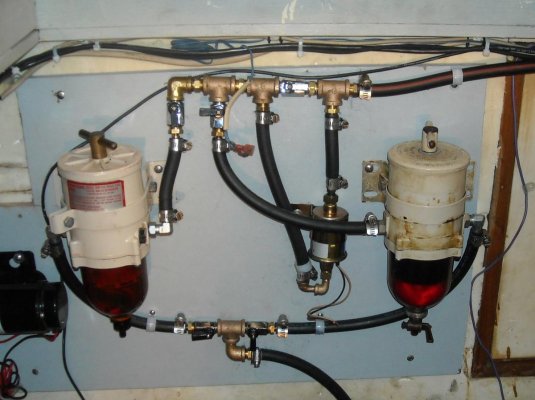psneeld
Guru
Greetings,
Mr. meridian. Ahh....something I hadn't considered. GOOD idea although at one point in the recent past I had to mechanically agitate the crud at the bottom of my Racors, with a long plastic cable tie to unpack it in order to drain the crud. So you're planning to put this electric pump before the Racor? In series or parallel? If in series, the question arises is the mechanical pump strong enough to draw fuel through the, not used all the time, electrical pump?
Agreed....crud does often form and I don't think forcing fuel through it is going to help as the whole idea of the turbine is to spin the flow of fuel so stuff settles out into the bowl.
The easiest way I have found to clean the bowl without disassembly is to unscrew the whole drain assembly and use a bottle brush up in there.

